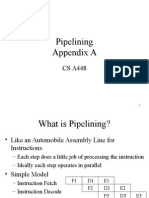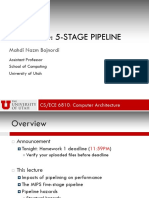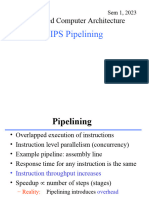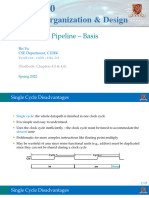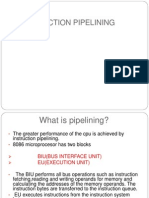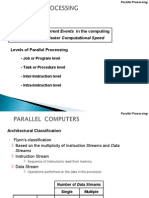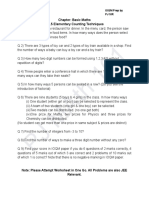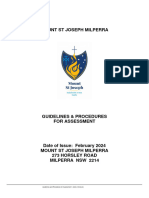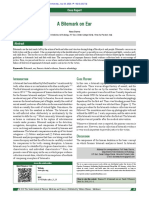0% found this document useful (0 votes)
361 views23 pagesCH7-Parallel and Pipelined Processing
The document discusses parallel and pipelined processing in computer architecture. It describes how parallel processing involves executing different instructions simultaneously on multiple processors with no data dependence, while pipelined processing divides instruction execution into stages and overlaps the stages across instructions to improve throughput. The key advantages of pipelining are that it makes efficient use of processor resources and enables faster execution of large programs, though it requires handling inter-stage communication and data dependencies between instructions. The document provides examples of 5-stage and 6-stage instruction pipelines.
Uploaded by
aashifr469Copyright
© © All Rights Reserved
We take content rights seriously. If you suspect this is your content, claim it here.
Available Formats
Download as PDF, TXT or read online on Scribd
0% found this document useful (0 votes)
361 views23 pagesCH7-Parallel and Pipelined Processing
The document discusses parallel and pipelined processing in computer architecture. It describes how parallel processing involves executing different instructions simultaneously on multiple processors with no data dependence, while pipelined processing divides instruction execution into stages and overlaps the stages across instructions to improve throughput. The key advantages of pipelining are that it makes efficient use of processor resources and enables faster execution of large programs, though it requires handling inter-stage communication and data dependencies between instructions. The document provides examples of 5-stage and 6-stage instruction pipelines.
Uploaded by
aashifr469Copyright
© © All Rights Reserved
We take content rights seriously. If you suspect this is your content, claim it here.
Available Formats
Download as PDF, TXT or read online on Scribd
/ 23

